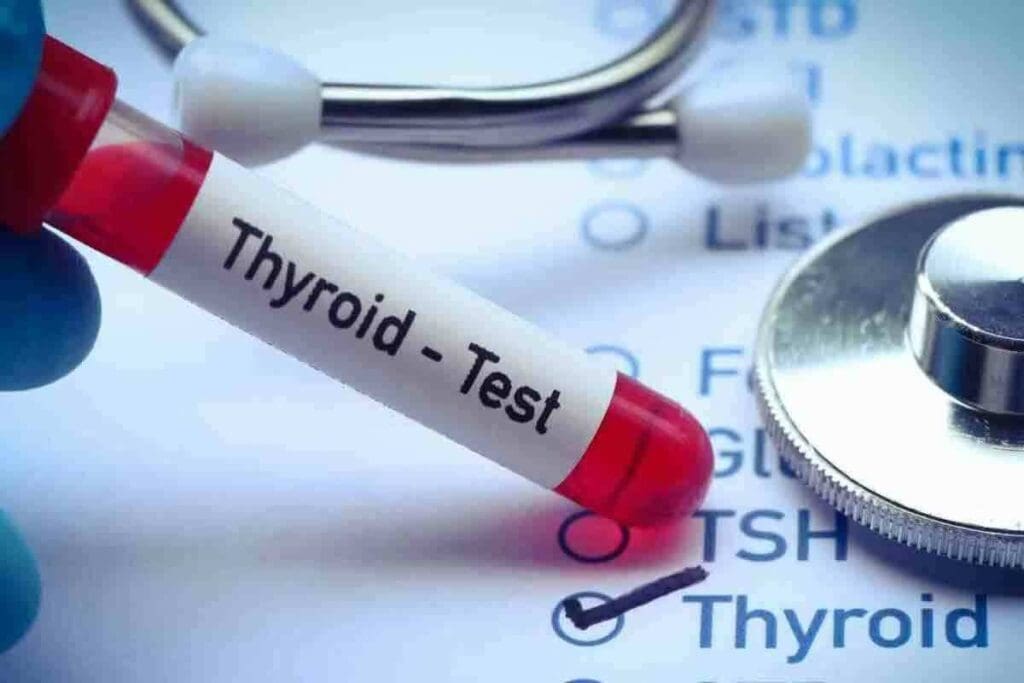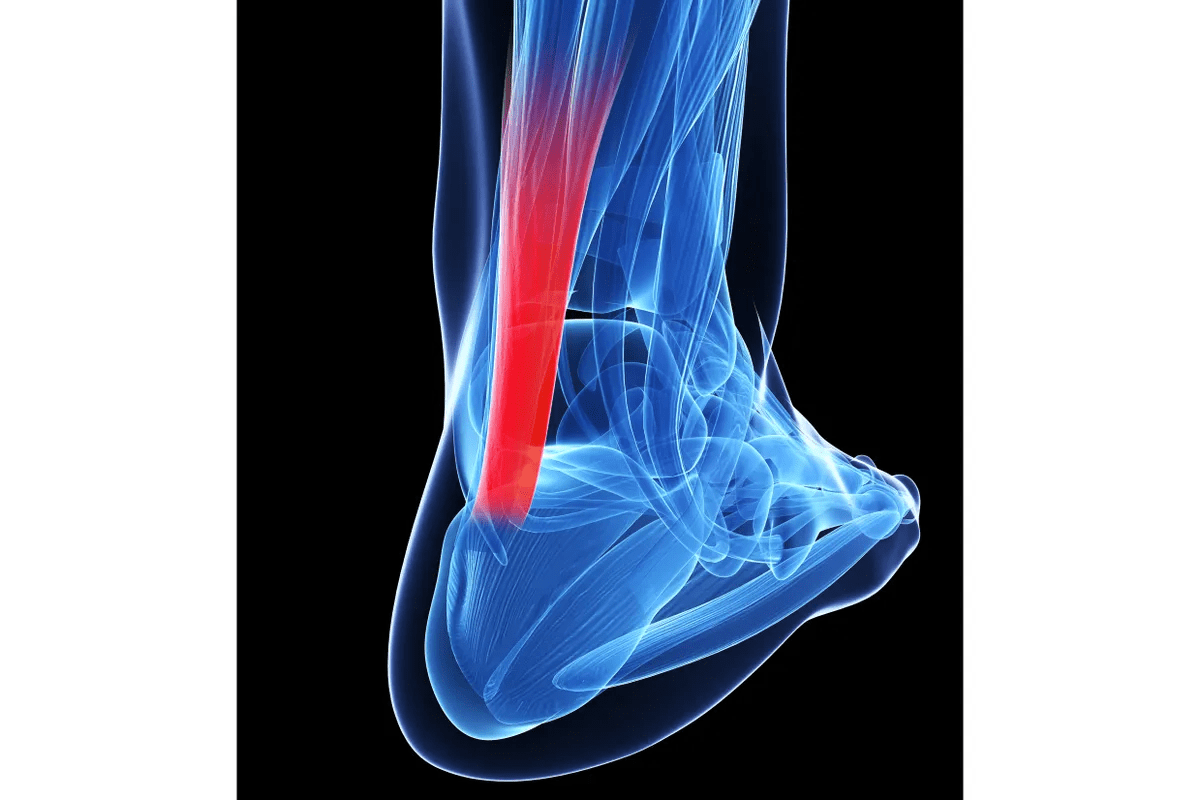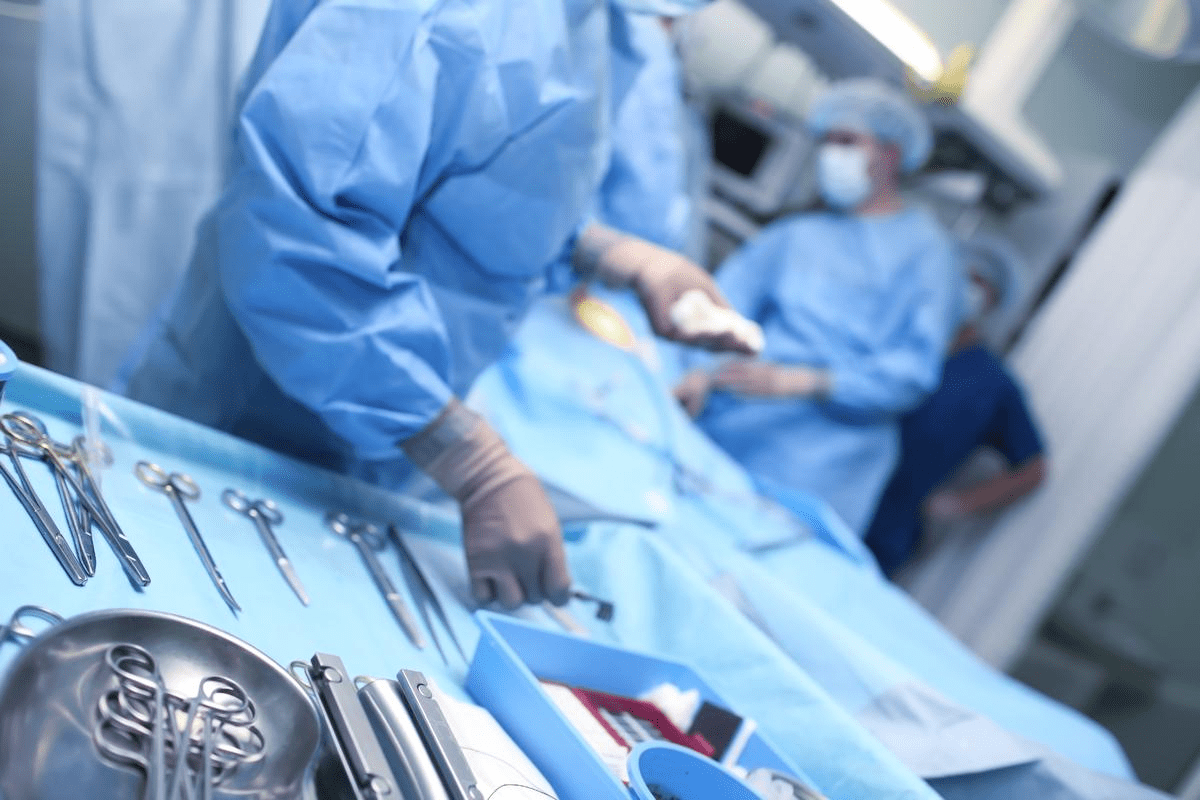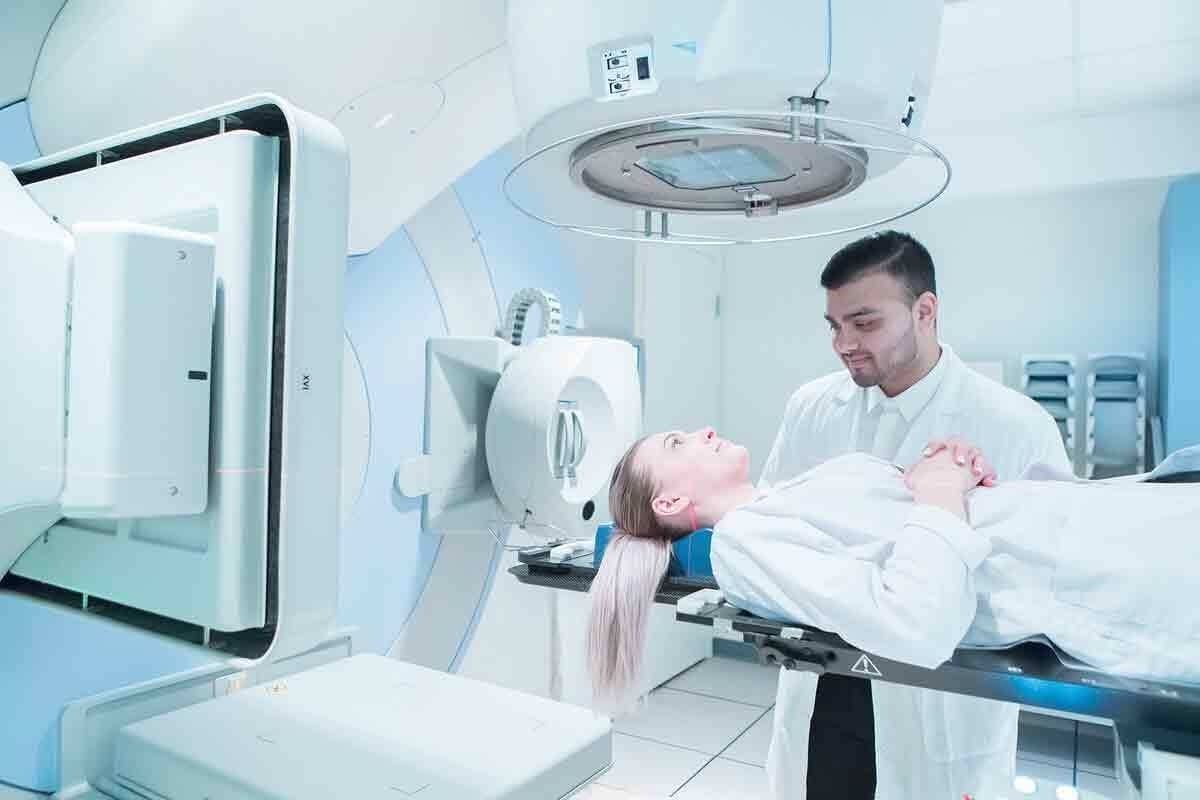Last Updated on November 27, 2025 by Bilal Hasdemir

At LivHospital, we use the I-131 scan to check thyroid function. It helps find any leftover thyroid tissue or cancer spread after thyroidectomy. This scan is key in managing care after thyroid surgery, helping us make the right treatment plans. Learn about i 131 scan uses, its role after thyroid surgery, and practical steps for follow-up and monitoring.
The iodine-131 isotope is what makes this scan work. It’s a top choice for checking on thyroid cancer after surgery. With this tech, we can spot problems early and create a treatment plan that fits each patient’s needs.
Key Takeaways
- The I-131 scan is key for finding leftover thyroid tissue or cancer spread after thyroidectomy.
- It uses the radioactive isotope iodine-131 to check thyroid function.
- This tool helps decide on further treatment for thyroid cancer patients.
- LivHospital focuses on advanced, patient-focused care.
- The I-131 scan is essential for post-thyroidectomy care, improving patient results.
8 Key Uses of Iodine 131 in Thyroid Disease Management

Iodine 131 is a key player in managing thyroid diseases. It’s taken up by thyroid cells, making it useful for both diagnosis and treatment. This makes it a valuable tool in the field of thyroid health.
“The use of radioactive iodine has revolutionized the management of thyroid cancer,” say thyroid cancer experts. This diagnostic and therapeutic agent is now essential in nuclear medicine.
Detecting Residual Thyroid Tissue After Surgery
Iodine 131 is mainly used to find leftover thyroid tissue after surgery. Doctors give a dose of radioactive iodine to see if any thyroid tissue is left. This is key to figuring out the next steps in treatment.
Identifying Metastatic Thyroid Cancer
Iodine 131 helps find thyroid cancer that has spread. It goes to thyroid cancer cells in other parts of the body. This helps doctors pinpoint and stage the disease accurately.
This is very important for patients with advanced thyroid cancer. It helps doctors make better treatment plans and predict outcomes.
Evaluating Thyroid Cancer Recurrence
Iodine 131 is also used to check for thyroid cancer coming back. Doctors watch how radioactive iodine is taken up to spot cancer early. This allows for quick action.
“Early detection of recurrence is key for effective management and better patient outcomes.”
Guiding Radioiodine Ablation Therapy
Lastly, iodine 131 helps guide radioiodine ablation therapy. This treatment uses radioactive iodine to kill off any remaining thyroid tissue. It helps lower the chance of cancer coming back.
The success of this therapy depends on understanding thyroid uptake scan results. By knowing how iodine 131 works with thyroid cells, doctors can create treatment plans that fit each patient’s needs.
Understanding Radioiodine Uptake and Thyroid Uptake Scan Results Interpretation

Understanding radioiodine uptake scan results is key to knowing about thyroid health and managing thyroid cancer. This tool helps us see how well thyroid cells take in iodine 131. It’s important for both diagnosing and planning treatments.
How Thyroid Cells Absorb Iodine 131
Thyroid cells take in iodine through a special protein. This protein helps iodine get into thyroid cells. It’s important for thyroid function and is used in both tests and treatments with iodine 131.
Reading and Understanding Uptake Percentages
The iodine 131 uptake percentage shows how active the thyroid is, or if there are cancer cells. A high percentage might mean thyroid tissue or cancer is present. A low percentage could mean the thyroid tissue is gone or there’s little cancer.
What Different Uptake Patterns Indicate
Different patterns in uptake scans tell us about thyroid health and cancer. For example, a spread-out pattern might show leftover thyroid tissue. A focused pattern could mean thyroid cancer has spread. We look at these patterns to decide on treatments like radioiodine ablation therapy and to check if treatments are working.
Preparing for Your I-1311 Scan: Essential Pre-Procedure Steps
To get the most out of your I-131 scan, you need to prepare well. We’ll walk you through the important steps to make your scan a success.
Thyroid Hormone Medication Adjustments
Adjusting your thyroid hormone medication is a key step. Usually, you’ll need to stop taking these meds before the scan. This is because they can mess with how the radioactive iodine works, which might affect the scan’s results.
Stopping your meds might be hard, but it’s needed for accurate scan results. The time you need to stop varies based on your meds and health. Always follow what your doctor tells you.
The Low-Iodine Diet: Complete Guidelines
Following a low-iodine diet is also important. Iodine can compete with the radioactive iodine, making the scan less effective. Eating foods low in iodine helps the scan work better.
- Avoid foods high in iodine, like seaweed and iodized salt.
- Limit dairy and eggs because they have iodine.
- Watch out for processed foods that might have iodine.
- Eat foods low in iodine, like fresh fruits, veggies, and non-iodized salt.
Sticking to a low-iodine diet can really improve your scan’s quality. For specific advice, talk to a nutritionist or your doctor.
Additional Preparation Requirements
There are more things to prepare for beyond meds and diet. These include:
- Tell your doctor about any allergies or sensitivities.
- Let them know about any recent medical treatments.
- Have someone with you after the scan because you’ll be radioactive.
By following these steps, you can make sure your yoI-131131 scan is safe and effective. If you have any questions, always ask your healthcare provider for help.
The Complete I-131 Scan Procedure: What to Expect
Knowing what to expect during an I-131 scan can ease your worries. This scan uses radioactive iodine to find thyroid tissue or cancer cells in your body.
Administration Methods for Radioactive Iodine
The first step is getting the radioactive iodine, often as a capsule or liquid. This iodine is taken up by thyroid tissue and then mostly goes out in urine. The iodine 131 isotope is chosen because it sticks to thyroid cells well, making the scan accurate.
Getting the iodine is simple. Doctors usually tell you to take it on an empty stomach to help it absorb better.
Waiting Period Between Dosing and Imaging
After getting the iodine, you wait for it to be absorbed by thyroid tissue or cancer cells. This wait time is usually 24 to 48 hours. During this time, you might be asked to eat a low-iodine diet to help the iodine work better.
The Scanning Process: Equipment and Duration
The scan uses a gamma camera to find the iodine-131 in your body. You’ll lie on a table while the camera moves around you, taking pictures from different angles.
The scan takes about 30 minutes to an hour. It’s usually painless, and you can go back to normal activities right after.
Patient Experience During the Procedure
Most people find the I-131 scan pretty comfortable. Getting the iodine isn’t painful, and the scan itself is not invasive. Some might feel a bit uncomfortable because they have to stay very quiet during the scan.
It’s key to listen to your healthcare team’s instructions. This helps make sure the scan works well and is safe for you.
I 131 Therapy: Therapeutic Applications Beyond Diagnosis
I-131 therapy is a big step forward in treating thyroid cancer. It targets and removes leftover thyroid tissue and cancer cells. This is very important for people who have had their thyroid gland removed.
Mechanism of Action: Destroying Thyroid Tissue
I-131 therapy uses iodine, which thyroid cells love. When given, it goes straight to thyroid cells, including cancerous ones. It then kills these cells from the inside.
This method is precise, avoiding harm to other tissues. It’s a key way to get rid of thyroid cells safely.
Dosage Differences Between Diagnostic and Therapeutic Uses
Therapeutic doses of I-131 are much higher than for tests. Diagnostic doses are 2-5 millicuries (mCi). But, therapeutic doses can be 30-150 mCi or more.
This depends on the patient’s health and the condition being treated.
Hospital Stay Requirements for Higher Doses
Patients getting I-131 therapy often need to stay in the hospital. This is to keep others safe from radiation. How long they stay depends on the dose and local rules.
Expected Outcomes of I-131 Therapy
The main goal of I-131 therapy is to kill any leftover thyroid or cancer cells. This lowers the chance of cancer coming back. Doctors check how well it worked with tests and scans.
| Therapy Outcome | Description | Follow-up |
| Successful Ablation | Complete destruction of thyroid tissue | Thyroglobulin levels, TSH monitoring |
| Partial Response | Reduction in thyroid tissue or cancer cells | Repeat I-131 therapy, additional treatments |
| No Response | No significant reduction in thyroid tissue or cancer cells | Alternative treatments, close monitoring |
Understanding I-131 therapy helps patients see its value in their treatment plan. It’s a strong tool against thyroid cancer, giving hope for better outcomes and fewer relapses.
Radiation Safety Protocols: Protecting Yourself and Others
To keep everyone safe, we follow strict radiation safety rules during and after I-131 treatments. Iodine 131’s decay means we must stick to these rules closely to cut down on radiation exposure.
Minimizing Radiation Exposure
There are ways to lower radiation exposure during I-131 treatments. These include:
- Using the right shielding to lessen radiation
- Keeping a safe distance from others, like kids and pregnant women
- Following a strict schedule for radioactive iodine to shorten the exposure time
These steps help a lot in reducing radiation risks.
Post-Procedure Safety Guidelines
After I 131 treatment, patients need to follow certain safety rules. These rules help protect them and others. Some important ones are:
- Drinking lots of water to flush out the radioactive iodine
- Avoiding close contact with others, like kids and pregnant women, for a while
- Using separate things like utensils and toiletries to avoid spreading germs
These guidelines help lower radiation exposure to others. It’s important to follow them carefully.
Special Considerations for Caregivers and Family Members
Caregivers and family members are key in supporting patients with I-131 treatment. To keep them safe, we suggest:
- Keeping a safe distance from the patient, mainly in the first days after treatment
- Practicing good hygiene when around the patient or their things
- Knowing the signs of radiation exposure and when to get medical help
By taking these steps, caregivers and family members can lower their radiation exposure. They can also support the patient well.
Managing Side Effects and Complications of I-131 Procedures
I-131 therapy is a valuable treatment option. But it’s important to know about possible side effects and complications. Patients may face a range of effects, from mild to severe. Understanding how to manage them is key to successful treatment.
Common Short-Term Side Effects
Short-term side effects of I 1I-131erapy include nausea, dry mouth, and sialadenitis. These effects are usually temporary. Good oral hygiene and staying hydrated can help with dry mouth and reduce sialadenitis risk.
Some patients may also notice changes in taste or a feeling of fullness in the neck. These symptoms usually go away within a few weeks.
Potential Long-Term Complications
Long-term complications of I-131 therapy are less common. They include hypothyroidism and, rarely, secondary malignancies. Regular follow-ups with a healthcare provider are vital to monitor thyroid function and catch any issues early.
| Complication | Description | Management |
| Hypothyroidism | An underactive thyroid gland can lead to fatigue, weight gain, and other symptoms. | Thyroid hormone replacement therapy. |
| Secondary Malignancies | Rare development of new cancers, potentially related to radiation exposure. | Regular monitoring and follow-up care. |
When to Contact Your Healthcare Provider
It’s important for patients to know when to seek medical attention. Severe symptoms like difficulty breathing, severe pain, or signs of infection require immediate contact. Also, report any unusual or persistent side effects for timely intervention.
Understanding the side effects and complications of I-131 procedures helps patients navigate their treatment journey confidently. Regular communication with healthcare providers and following post-procedure care guidelines are essential. This approach minimizes risks and aims for the best outcomes.
Post-Scan Care: Resuming Normal Life After I-131 Procedures
After an I-131 scan or therapy, it’s key to know how to care for yourself. This helps you get back to your normal life smoothly. It’s all about taking care of your thyroid health.
Returning to Regular Diet and Medication Schedule
First, start eating like you normally do. Patients should go back to their usual diet, full of nutrients. If you were on a low-iodine diet before, now you can add iodine-rich foods back in.
Managing your meds is also important. Thyroid hormone replacement therapy needs to be taken as your doctor says. Stick to the schedule to keep your thyroid hormone levels right.
Follow-up Appointments and Monitoring
Going to regular check-ups is key to your thyroid health after an I 131 procedure. These visits help doctors see if the treatment worked and if they need to change your plan. Always show up to your appointments and tell your doctor if anything changes.
At these visits, you might have tests like thyroid function tests. You might also have more imaging studies. This is to make sure your thyroid is working right and there’s no cancer coming back.
Thyroid Hormone Replacement Management
Managing your thyroid hormone replacement is a big part of your care. Patients need to work closely with their healthcare provider to adjust their meds as needed. Blood tests will help figure out if your dosage is right or if it needs to be changed.
Know the signs of thyroid hormone imbalance, like feeling tired, gaining or losing weight, or mood swings. If you notice these, tell your doctor right away.
Conclusion: Embracing the Journey of Thyroid Cancer Surveillance
Thyroid cancer is complex, but surveillance is key for good outcomes. The I-131 scan is important. It helps doctors find and treat thyroid cancer well.
Knowing how iodine 131 helps in managing thyroid disease is important. It helps patients understand their treatment better. Regular checks and the right treatment, like thyroid hormone replacement, are vital for care.
Getting a thyroid cancer diagnosis is tough. But with the right help and support, patients can do well. Our team works together to give personalized care for thyroid cancer surveillance.
I131scans and therapy help manage thyroid cancer well. We educate and support patients. This way, they can actively participate in their care, leading to the best results.
FAQ
What is the purpose of an I 131 scan after thyroidectomy?
The I-131 scan helps find leftover thyroid tissue or cancer cells after surgery. It guides doctors in making treatment plans.
How does iodine-131 work in thyroid disease management?
Iodine 131 is taken up by thyroid cells. This helps doctors find and kill thyroid cancer cells.
What are the uses of iodine-131 in thyroid cancer care?
Iodine 131 is used to find leftover thyroid tissue and identify thyroid cancer spread. It also helps check for cancer recurrence and guides treatment.
How do thyroid cells absorb iodine 131?
Thyroid cells naturally take up iodine 131. This makes it possible to diagnose and treat thyroid cancer.
What does a thyroid uptake scan measure?
A thyroid uptake scan shows how much radioactive iodine the thyroid gland takes up. It tells about thyroid function and cancer presence.
How should I prepare for an I-131 scan?
To prepare, adjust your thyroid hormone meds and follow a low-iodine diet. Other steps are needed for accurate results.
What happens during the I-131 scan procedure?
First, you get radioactive iodine. Then, you wait and get scanned to find thyroid tissue or cancer cells.
What is I-131 therapy used for?
I-131 therapy kills thyroid cancer cells and leftover thyroid tissue. It often uses higher doses than scans.
How can radiation exposure be minimized during I-131 procedures?
Follow safety guidelines after the procedure. Avoid close contact with others and take precautions to lower radiation exposure.
What are the common side effects of I-131 procedures?
Side effects include nausea, dry mouth, and taste changes. Long-term risks include damage to salivary glands or other tissues.
How should I manage my thyroid hormone replacement therapy after I 131 procedures?
Resume your medication schedule and keep follow-up appointments. Monitor your thyroid hormone levels for good health.
What are the expected outcomes of I 131 therapy?
I 131 therapy aims to destroy thyroid cancer cells and leftover tissue. This improves treatment results and lowers cancer return risk
References
Second primary malignancies induced by radioactive iodine therapy. (2022). PMC. Retrieved from https://pmc.ncbi.nlm.nih.gov/articles/PMC9250458/






